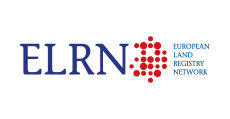ELRD Template
European Land Register Document
IMOLA has reached a proof of concept of an ELRD (European Land Register Document) or template for organizing land register information at European level. This project has been based upon the following guidelines:
1. Judicial cooperation. ELRA consider that one of the main functions of the land register systems is to facilitate information intended for the legal purposes. Therefore, the paramount scope of the ELRD is judicial cooperation that European legislation is in fact requiring, as well as facilitating transactions of properties (mortgages, sales) by means of information of the legal status of the marketable properties.
2. Bottom-up. This legal information is based on a bottom up approach of the European LR systems (legal neutrality: not the imposition of one model of those existing in Europe). IMOLA approach suggests:
– Structure ABC of the information;
– Plurality of the land register units or properties;
– Ownership with attributes;
– Organization of the encumbrances on the properties including judicial restrictions.
– That is the result of efforts for mutual understanding between ELRN Contact Points and a complicate balance, given the extreme legal diversity in land registration.
3. Legal minimum. ELRD should contain sufficient legal information to provide an adequate idea on the legal status of the land register units or properties. Information is not useful if relevant aspects of it are omitted.
4. Flexibility. The idea was not very simplified information but a flexible model in order to include all relevant registry information. Omissions in legal information make it inconsistent. ELRD may be used and adapted by all European systems or the more the merrier.Every land register system could arrange information data on this scheme insofar they are available or disable those data fields not available, depending on the national specifics. Although ELRD is easier for title registration systems, deed registration systems may adapt information of the personal folio to the requirements of ELRD by means of the relation of deeds which it involves. ELRD may be a European guideline for land registries information given that it is based on mutual understanding or minimum shared by the network of contact Points (ELRN).
5. Reference Information. Reference information and Glossaries support ELRD in order to explain the use of the template and the comprehension of its legal terms.
6. Glossaries explain relevant placeholders. There must be a general glossary and also national glossaries in relation with the general one.
7. Reference information (RI) is devoted to explaining the meaning of the information more in detail, even in context. In IMOLA project ELRN have implemented 5 Reference Information Fact Sheets for these purposes (LR Unit (Section A), Propretorship (Section B), Encumbrances (Section C), Legal Value of LR Information and Legal effects of Registration.)
8. Semantic Model. ELRD has required a Semantic model based on:
– Placeholders (in English) and commonalities of LR information at European level (ELRA bottom-up approach);
– A Thesaurus, which becomes the cornerstone of the following developments of IMOLA;
– Features of e-Codex building blocks, which have to be taken into account.
These examples are the result of a proof of concept proposed by ELRA based on the information issued by the registration systems of the following countries:


